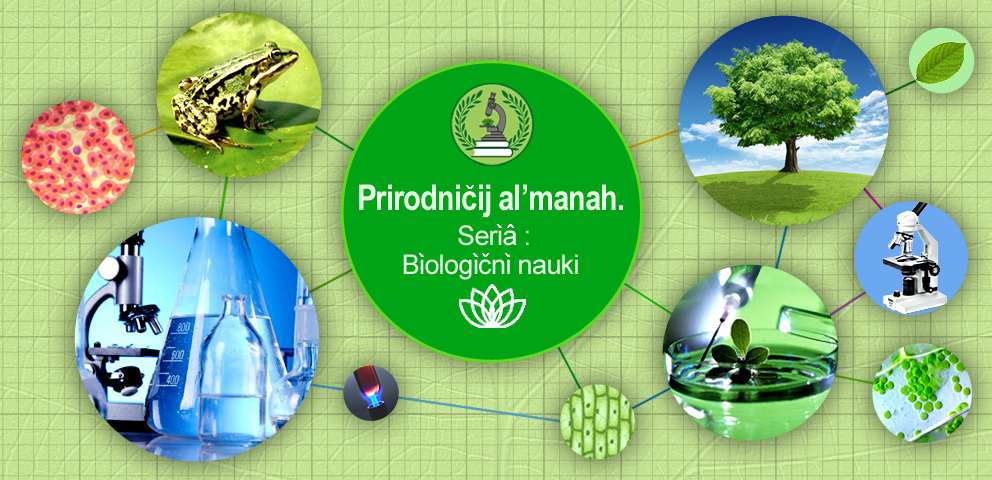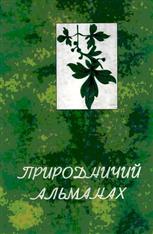PROGNOSTIC MODELS FOR IMAGE PROCESSING AND INTERPRETATION IN ONCOLOGY
Abstract
In 2020, the number of newly diagnosed oncological pathologies worldwide amounted to 19.29 million cases, with 9.96 million deaths. In Ukraine, 106,151 cases of newly detected malignant neoplasms were registered in 2023, with 42,642 deaths. In recent decades, the role of artificial intelligence in screening, diagnosis, and prognosis of oncological pathologies and complications has increased. Various neural network models demonstrate the ability to work with different types of data and process large datasets. The aim of the article is to outline the main prospects and challenges of using neural networks in the analysis and interpretation of visual data in oncology, specifically in the diagnosis and prognosis of oncological pathologies based on visual data. Literature sources for analysis were selected from the publicly accessible PubMed database. Keywords used for the search were «oncology», «artificial intelligence», «visualization». Articles published from 2020 to 2025 were selected for analysis. The database query was made on March 21, 2025. A total of 2131 studies were found. The analysis of literature sources demonstrated that deep learning algorithms are predominantly used for the interpretation of images such as histopathological images, endoscopy, ultrasound, MRI, CT, and radiography. All analyzed articles where AI was used for medical image analysis indicated an AUC above 0.75. In studies comparing the effectiveness of malignant neoplasm diagnosis using AI and specialized physicians, no statistically significant differences in AUC were observed. However, the studies are conducted on retrospective data, meaning AI training was performed under idealized conditions.
References
2. Ching T, Zhu X, Garmire LX. Cox-nnet: an artificial neural network method for prognosis prediction of high-throughput omics data. Markowetz F, editor. PLoS Comput Biol. 2018;14:e1006076. Dias R, Torkamani A. Artificial intelligence in clinical and genomic diagnostics. Genome Med. 2019;11(1):70. doi: 10.1186/s13073-019-0689-8.
3. Clift A. K., Dodwell D., Lord S., et al, Development and Internal‐External Validation of Statistical and Machine Learning Models for Breast Cancer Prognostication: Cohort Study, BMJ 381 (2023): 073800, 10.1136/bmj-2022-073800
4. Esteva A, Robicquet A, Ramsundar B, et al. A guide to deep learning in healthcare. Nat Med . 2019;25(1):24-29. doi: 10.1038/s41591-018-0316-z.
5. Gerstung M., Liu D., Ghassemi M., et al., Artificial Intelligence, Cancer Cell 42, no. 6 (2024): 915–918, 10.1016/j.ccell.2024.05.021
6. Hao J, Kim Y, Kim T-K, Kang M. PASNet: pathway-associated sparse deep neural network for prognosis prediction from high-throughput data. BMC Bioinformatics. 2018;19:510. doi: 10.1186/s12859-018-2500-z.
7. Huang S, Yang J, Fong S, et al. Artificial intelligence in cancer diagnosis and prognosis: opportunities and challenges. Cancer Lett. 2020;471:61-71. doi: 10.1016/j.canlet.2019.12.007.
8. Huang Z, Johnson TS, Han Z, Helm B, Cao S, Zhang C, et al. Deep learning-based cancer survival prognosis from RNA-seq data: approaches and evaluations. BMC Med Genet. 2020;13:41. doi: 10.1186/s12920-020-0686-1.
9. Katzman JL, Shaham U, Cloninger A, Bates J, Jiang T, Kluger Y. DeepSurv: personalized treatment recommender system using a Cox proportional hazards deep neural network. BMC Med Res Methodol. 2018;18:24. doi: 10.1186/s12874-018-0482-1.
10. Lei C, Sun W, Wang K, Weng R, Kan X, Li R. Artificial intelligence-assisted diagnosis of early gastric cancer: present practice and future prospects. Ann Med. 2025 Dec;57(1):2461679. doi: 10.1080/07853890.2025.2461679.
11. Li L, Chen Y, Shen Z. Convolutional neural network for the diagnosis of early gastric cancer based on magnifying narrow band imaging. Gastric Cancer . 2020; 23 (1): 126–132. doi: 10.1007/s10120-019-00992-2
12. Nakanishi H, Doyama H, Ishikawa H, et al. Evaluation of an e-learning system for diagnosis of gastric lesions using magnifying narrow-band imaging: a multicenter randomized controlled study. Endoscopy. 2017;49(10):957–967. doi: 10.1055/s-0043-111888.
13. Namdar K, Wagner MW, Kudus K, Hawkins C, Tabori U, Ertl-Wagner BB, Khalvati F. Improving Deep Learning Models for Pediatric Low-Grade Glioma Tumours Molecular Subtype Identification Using MRI-based 3D Probability Distributions of Tumour Location. Can Assoc Radiol J. 2025 May;76(2):313-323. doi: 10.1177/08465371241296834.
14. Portnoi T., Yala A., Schuster T., et al., «Deep Learning Model to Assess Cancer Risk on the Basis of a Breast MR Image Alone», American Journal of Roentgenology 213, no. 1 (2019): 227–233, 10.2214/Ajr.18.20813
15. Sarker IH, “Machine Learning: Algorithms, Real‐World Applications and Research Directions”, SN Computer Science 2, no. 3 (2021): 160, 10.1007/s42979-021-00592-x.
16. Shen Y., Shamout F. E., Oliver J. R., et al., «Artificial Intelligence System Reduces False‐Positive Findings in the Interpretation of Breast Ultrasound Exams», Nature Communications 12, no. 1 (2021): 5645, 10.1038/s41467-021-26023
17. Shkuropat, A. V. Coherent relations in EEGs of adolescents with partial hearing loss under conditions of an orthostatic test. Neurophysiology, 2018, 50.5: 365-371. https://doi.org/10.1007/s11062-019-09763-2
18. Sun S., Mutasa S., Liu M. Z., et al., «Deep Learning Prediction of Axillary Lymph Node Status Using Ultrasound Images», Computers in Biology and Medicine 143 (2022): 105250, 10.1016/j.compbiomed.2022.105250.
19. Swanson K., Wu E., Zhang A., Alizadeh AA, and Zou J., «From Patterns to Patients: Advances in Clinical Machine Learning for Cancer Diagnosis, Prognosis, and Treatment», Cell 186, no. 8 (2023): 1772–1791, 10.1016/j.cell.2023.01.035
20. Tang D, Ni M, Zheng C, et al. A deep learning-based model improves diagnosis of early gastric cancer under narrow band imaging endoscopy. Surg Endosc. 2022;36(10):7800–7810. doi: 10.1007/s00464-022-09319-2.
21. Trepanier C., Huang A., Liu M., and Ha R., «Emerging Uses of Artificial Intelligence in Breast and Axillary Ultrasound,» Clinical Imaging 100 (2023): 64–68, 10.1016/j.clinimag.2023.05.007.
22. Vachon C. M., Scott C. G., Norman A. D., et al., «Impact of Artificial Intelligence System and Volumetric Density on Risk Prediction of Interval, Screen‐Detected, and Advanced Breast Cancer», Journal of Clinical Oncology 41, no. 17 (2023): 3172–3183, 10.1200/Jco.22.01153
23. Wu L, Zhou W, Wan X, et al. A deep neural network improves endoscopic detection of early gastric cancer without blind spots. Endoscopy. 2019;51(6):522–531. doi: 10.1055/a-0855-3532
24. Wu S., Yue M., Zhang J., et al., «The Role of Artificial Intelligence in Accurate Interpretation of Her2 Immunohistochemical Scores 0 and 1+ in Breast Cancer», Modern Pathology 36, no. 3 (2023): 100054,
25. Xiao J., Mo M., Wang Z., et al., “The Application and Comparison of Machine Learning Models for the Prediction of Breast Cancer Prognosis: Retrospective Cohort Study,” JMIR Medical Informatics 10, no. 2 (2022): e33440, 10.2196/33440.
26. Yuan X-L, Zhou Y, Liu W, et al. Artificial intelligence for diagnosing gastric lesions under white-light endoscopy. Surg Endosc. 2022;36(12):9444–9453. doi: 10.1007/s00464-022-09420-6.
27. Zhang H, Xi Q, Zhang F, Li Q, Jiao Z, Ni X. Application of Deep Learning in Cancer Prognosis Prediction Model. Technol Cancer Res Treat. 2023 Jan-Dec;22:15330338231199287. doi: 10.1177/15330338231199287.
28. Zuo L, Wang Z, Wang Y. A multi-stage multi-modal learning algorithm with adaptive multimodal fusion for improving multi-label skin lesion classification. Artif Intell Med. 2025 Apr;162:103091. doi: 10.1016/j.artmed.2025.103091.
29. РАК В УКРАЇНІ, 2022 – 2023 Захворюваність, смертність, показники діяльності онкологічної служби / З.П.Федоренко, О.В.Сумкіна, О.В.Сумкіна, Є.Л.Горох, Л.О.Гулак, А.Ю.Рижов, В.О.Зуба // дата звернення 24.03.2025

